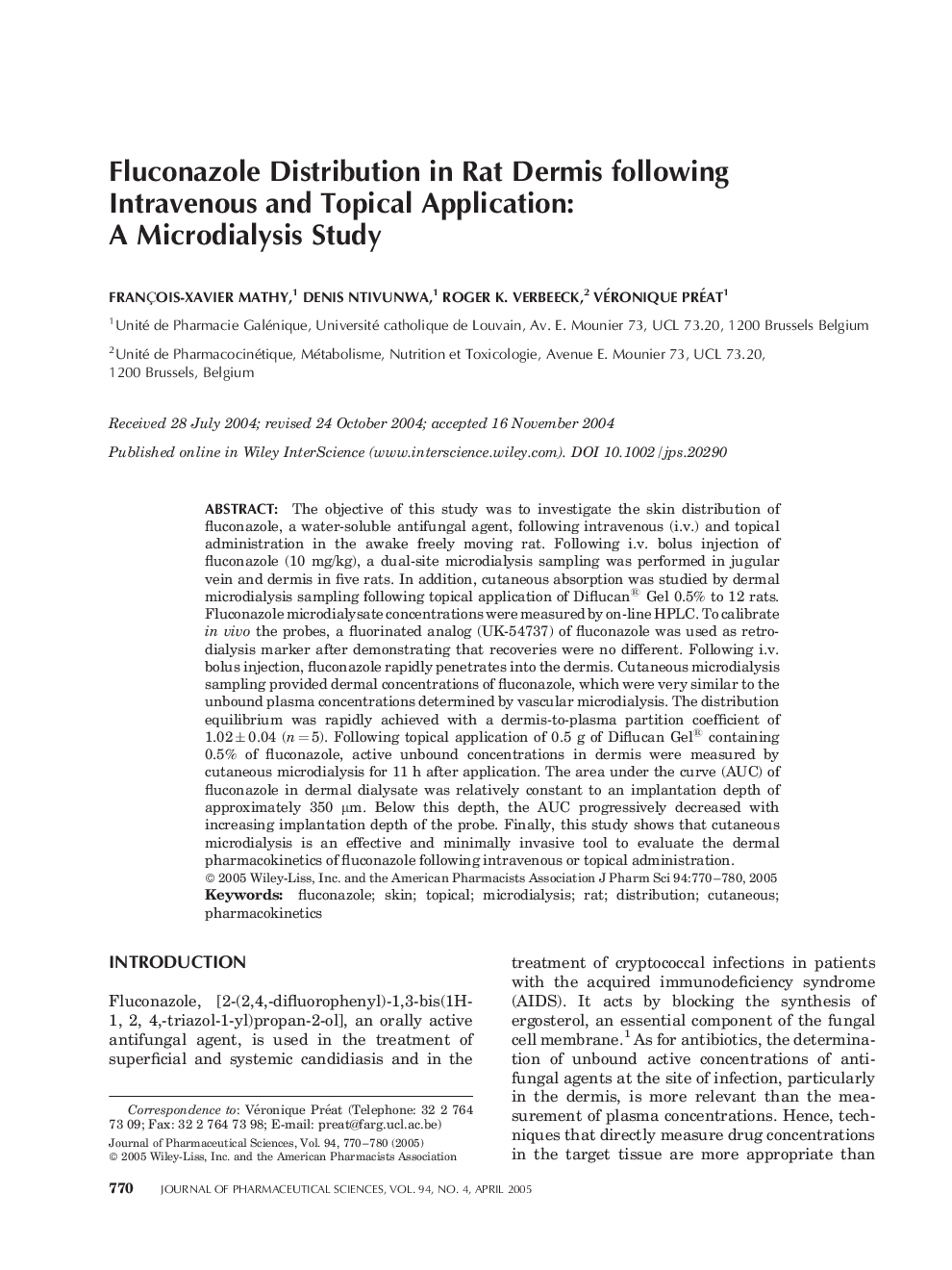| Article ID | Journal | Published Year | Pages | File Type |
|---|---|---|---|---|
| 8994952 | Journal of Pharmaceutical Sciences | 2005 | 11 Pages |
Abstract
The objective of this study was to investigate the skin distribution of fluconazole, a water-soluble antifungal agent, following intravenous (i.v.) and topical administration in the awake freely moving rat. Following i.v. bolus injection of fluconazole (10 mg/kg), a dual-site microdialysis sampling was performed in jugular vein and dermis in five rats. In addition, cutaneous absorption was studied by dermal microdialysis sampling following topical application of Diflucan® Gel 0.5% to 12 rats. Fluconazole microdialysate concentrations were measured by on-line HPLC. To calibrate in vivo the probes, a fluorinated analog (UK-54737) of fluconazole was used as retrodialysis marker after demonstrating that recoveries were no different. Following i.v. bolus injection, fluconazole rapidly penetrates into the dermis. Cutaneous microdialysis sampling provided dermal concentrations of fluconazole, which were very similar to the unbound plasma concentrations determined by vascular microdialysis. The distribution equilibrium was rapidly achieved with a dermis-to-plasma partition coefficient of 1.02 ± 0.04 (n = 5). Following topical application of 0.5 g of Diflucan Gel® containing 0.5% of fluconazole, active unbound concentrations in dermis were measured by cutaneous microdialysis for 11 h after application. The area under the curve (AUC) of fluconazole in dermal dialysate was relatively constant to an implantation depth of approximately 350 μm. Below this depth, the AUC progressively decreased with increasing implantation depth of the probe. Finally, this study shows that cutaneous microdialysis is an effective and minimally invasive tool to evaluate the dermal pharmacokinetics of fluconazole following intravenous or topical administration.
Related Topics
Health Sciences
Pharmacology, Toxicology and Pharmaceutical Science
Drug Discovery
Authors
François-Xavier Mathy, Denis Ntivunwa, Roger K. Verbeeck, Véronique Préat,
